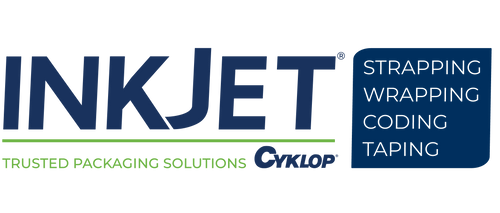How Does a Labeling Machine Work Within Assembly Lines
Properly placed, clearly legible labels are a necessity for manufacturers around the world. In a time of increasingly complex supply chains and rigid marketplace standards, labels help companies fulfill several key functions, including:
- Counterfeit prevention
- Quality assurance
- Product tracking and reporting
- Retailer code compliance
- Governmental regulation compliance
Product labels complete these objectives by displaying fully traceable product codes and markings. While these required markings vary by industry, they commonly take the form of barcodes, data matrices, expiration dates, and serial numbers. In addition to product labels, shipping labels also play a key role in supply chain success as they provide workers with essential information like:
- Shipping address
- Return address
- Total weight
- Specific contents
However, labels only work as intended if they are applied correctly and feature legible text. With modern production lines moving at hundreds of meters per minute, it’s essential for companies to use quality labeling equipment that can meet their needs with ease. For these reasons, labeling machines are popular across the manufacturing and packaging industries.
Labeling hardware like print and apply systems enable companies to both streamline label production as well as complete labeling applications with speed and precision. For those who have never used a labeler before, however, this technology can be intimidating. Just by looking at a labeler’s multipart construction, neophytes often ask:
- How does a labeling machine work?
- How are labeling machines arranged in assembly lines?
- How are labeling machines integrated into an IT system?
If you’ve been asking these kinds of questions, you’ve come to the right place. Look below for the answers:
How Does a Labeling Machine Work?
Print and apply labeling machines come in a variety of forms, but they all perform the same basic functions—create text-filled, pressure-sensitive labels and apply them to either a product, shipping container, or pallet. It is important to note that some labeling machines only fulfill the application process. But for the print and apply labelers to perform these functions, they are built with three main components:
- The Print Engine: The print engine is responsible for marking the labels with required text and images. To complete this task, the print engine is connected to the company’s IT system. Through this connection, users can easily design labels and instruct the label machine to print them out. The print engine then uses either direct thermal or thermal transfer printing methods to mark the label with the specified information.
-
The Applicator: Once the print engine has prepared a label for application, the applicator delivers it to the substrate. Applicators can complete this function in many different ways. For example:
- Belt applicators place labels by running them from the print engine to the substrate by way of a vacuum belt.
- Blow applicators place labels by using pressurized air to move them from the print engine onto the substrate.
- Swing applicators place labels by using a mechanical arm to move them directly onto the substrate.
Companies can choose from these applicator options to find the method that works best for their unique lineup configuration.
- The Media Handling: The media handling holds and delivers the label stock to the print engine for label preparation. It is also responsible for separating the label itself from the adhesive backing.
With these three parts working together, labeling machines can work effectively on your line.
How Are Labeling Machines Commonly Arranged on Assembly Lines?
Companies strategically place labeling machines in their line setups based on their marking needs. For example, many companies use printing equipment like continuous inkjet (CIJ) printers and thermal inkjet (TIJ) printers in addition to labeling machines. In these cases, the company can use the printer to directly mark the product, the applied label, or the product packaging.
Depending on how you are choosing to mark your products (e.g., on the label or product itself), you will either need to place the labeling machine in front of or behind the printer.
How Are Labeling Machines Integrated Into an IT System?
System integration is the key to running an efficient packaging line. Through complete system integration, companies can link their equipment together for collective functionality. By including labeling machines in this system, companies are able to streamline and remotely control all label applications.
Users can integrate labeling machines through three methods:
- Programming integration—the user’s existing system is altered to fully incorporate the labeler. This approach enables the most usability, but it also requires the most resources and effort to build.
- Middleware integration—software connects the labeling machine to an existing database/operating system. With this method, users are able to pull information from the IT system to simplify label-making.
- Direct printing integration—a label design program like NiceLabel is used as the connection between the IT system and the labeling machine. This method is the easiest to implement but does not offer the same level of remote functionality as other approaches.
Choosing the right integration method depends on different factors related to both the user’s existing network as well as the specific labeling machine. Accordingly, it’s important to speak with an expert to discover which approach is best.
Have More Labeling Machine Questions? We Have Answers
Labeling machines give companies the ability to finalize their products at a quick, reliable pace. However, they can be intimidating for those who have never used them before. The team at InkJet, Inc. is here to help with your labeling machine questions.
For decades, our team has helped companies improve their line operations by offering expert advice and high-quality marking equipment. Whatever labeling questions you have, we have the answers.
If you’re wondering, “How does a labeling machine work?”, contact InkJet, Inc. online or by phone at 1(800) 280-3245 to learn more.



